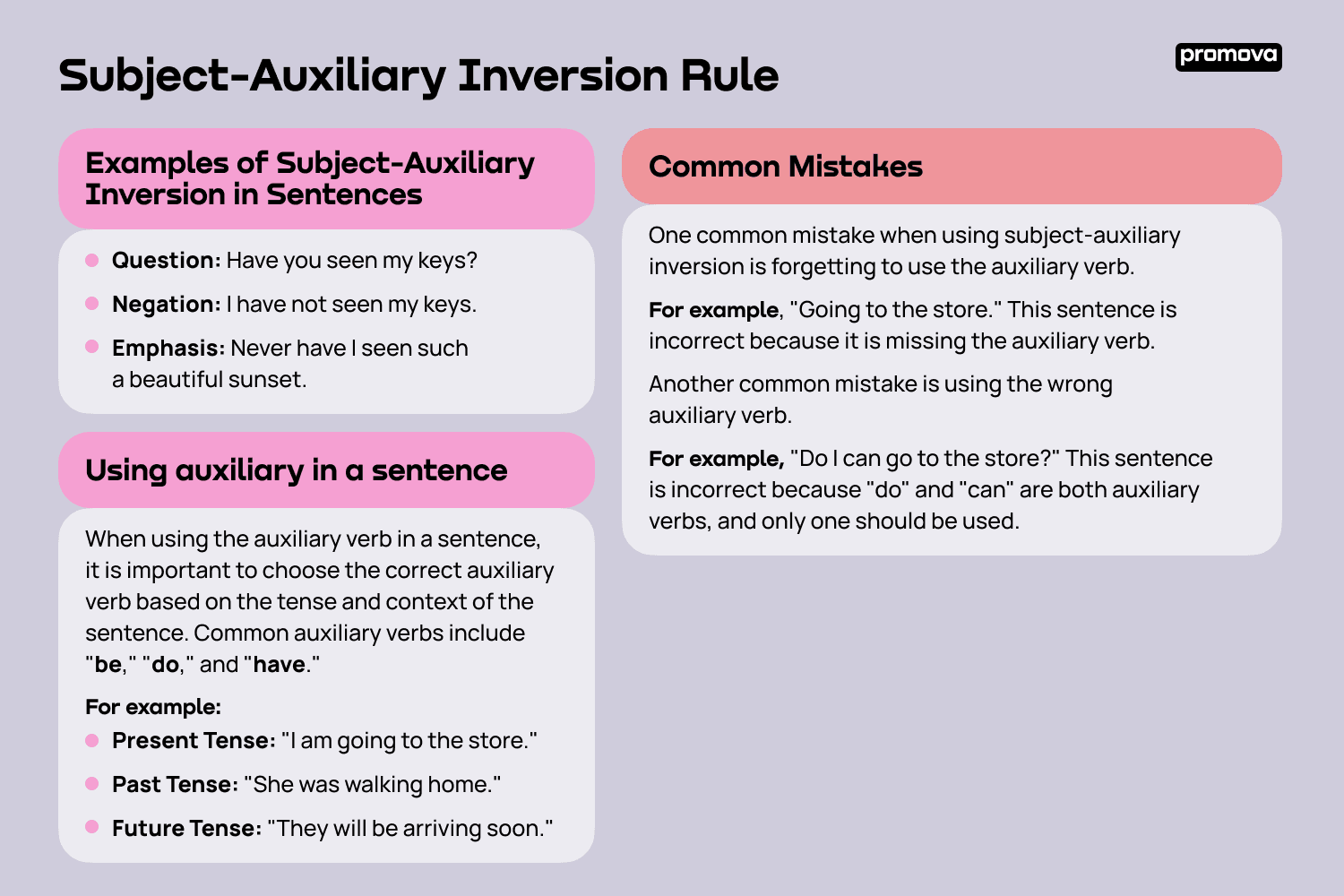Subject-Auxiliary Inversion Rule
Contents
The subject-auxiliary inversion rule is a sentence structure where the subject and auxiliary verb switch places in a sentence. This structure is commonly used in English grammar for various reasons, including questions, negations, and emphasis. To better understand this grammar rule, let's take a closer look at some examples of subject-auxiliary inversion in sentences.
Examples of Subject-Auxiliary Inversion in Sentences
- Question: Have you seen my keys?
- Negation: I have not seen my keys.
- Emphasis: Never have I seen such a beautiful sunset.
In these examples, the auxiliary verb "have" switches places with the subject in questions, negations, and emphasis. This structure is commonly used in English grammar to add emphasis or change the meaning of a sentence.

Why Subject-Auxiliary Inversion is Used
Subject-auxiliary inversion is used for a variety of reasons, including asking questions, making negative statements, and adding emphasis to a sentence. For example, when asking a question, the auxiliary verb usually comes before the subject.
- It helps indicate that a question is being asked, and it clarifies the meaning of the sentence.
- In negations, subject-auxiliary inversion helps to create a negative sentence by placing the auxiliary verb before the subject. This structure is used to indicate that something is not true or did not happen.
- It can add emphasis to a sentence. When the auxiliary verb comes before the subject, it draws attention to the subject and makes it stand out.
Differences between Subject-Auxiliary inversion and regular sentence structure
In regular sentence structure, the subject comes before the verb. For example, "I am going to the store." In this sentence, "I" is the subject and "am going" is the verb.
However, in subject-auxiliary inversion, the auxiliary verb comes before the subject. For example, "Am I going to the store?" In this sentence, "am" is the auxiliary verb and "I" is the subject.
Common Mistakes
One common mistake when using subject-auxiliary inversion is forgetting to use the auxiliary verb. For example, "Going to the store." This sentence is incorrect because it is missing the auxiliary verb.
Another common mistake is using the wrong auxiliary verb. For example, "Do I can go to the store?" This sentence is incorrect because "do" and "can" are both auxiliary verbs, and only one should be used.
Advanced uses of Subject-Auxiliary inversion
In addition to asking questions, negations, and emphasis, subject-auxiliary inversion is also used in conditional sentences, passive voice, and inverting phrases.
In conditional sentences, subject-auxiliary inversion is used to create the if-clause. You could say, "If I were you, I would go to the store."
In passive voice, subject-auxiliary inversion is used to show that the object is more important than the subject. For example, "The car was hit by a truck."
Inverting phrases also helps bring out meaning of sentences. For example, "Never have I seen such a beautiful sunset." This sentence is structured differently than regular sentence structure and adds emphasis to the word "never."
7
Using auxiliary in a sentence
When using the auxiliary verb in a sentence, it is important to choose the correct auxiliary verb based on the tense and context of the sentence. Common auxiliary verbs include "be," "do," and "have."
For example:
- Present Tense: "I am going to the store."
- Past Tense: "She was walking home."
- Future Tense: "They will be arriving soon."
Summary
The subject-auxiliary inversion rule is a sentence structure where the subject and auxiliary verb switch places in a sentence. This structure is used for questions, negations, and emphasis, as well as in conditional sentences, passive voice, and inverting phrases. Use this structure to improve your language skills and get ahead in your English!
Comments